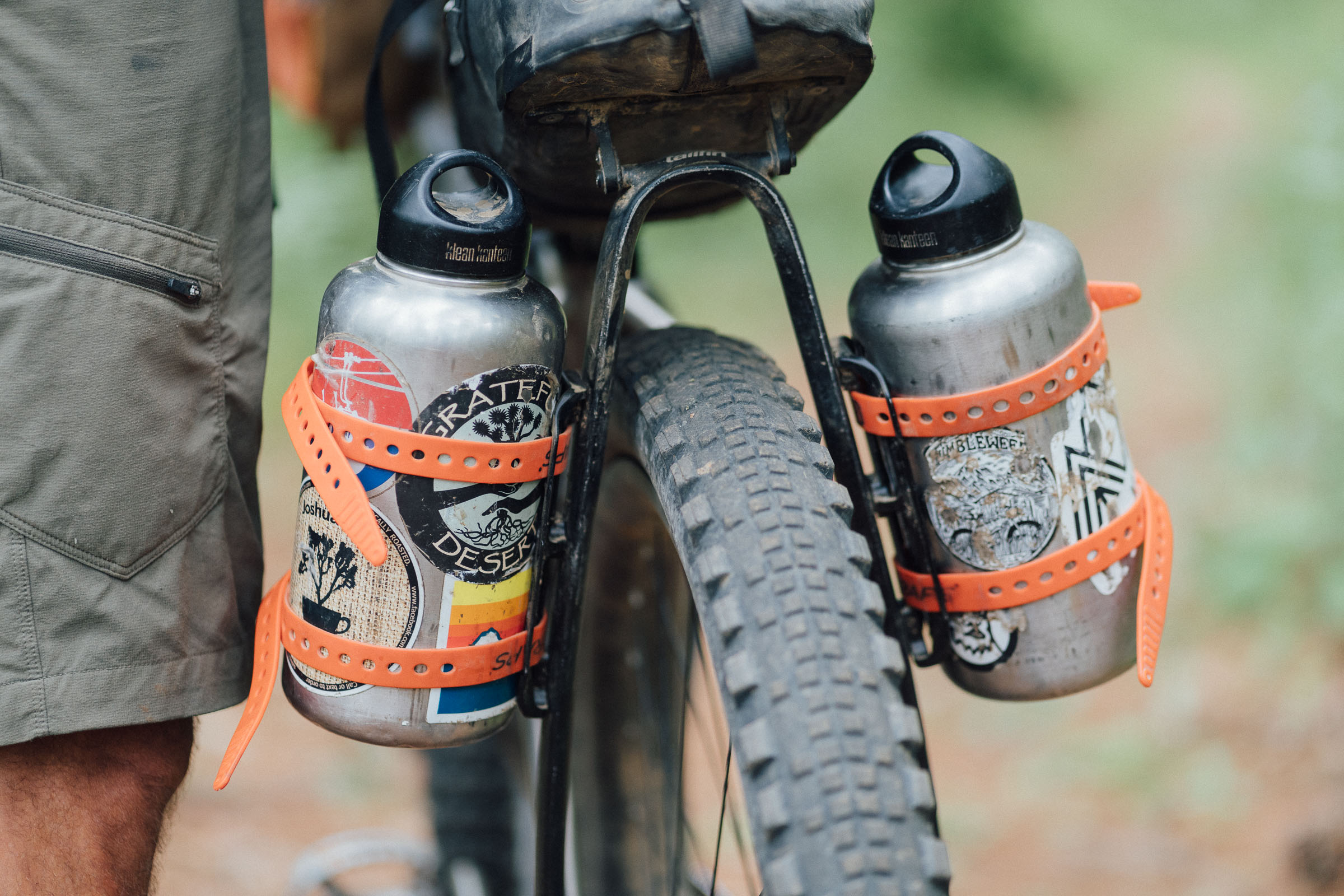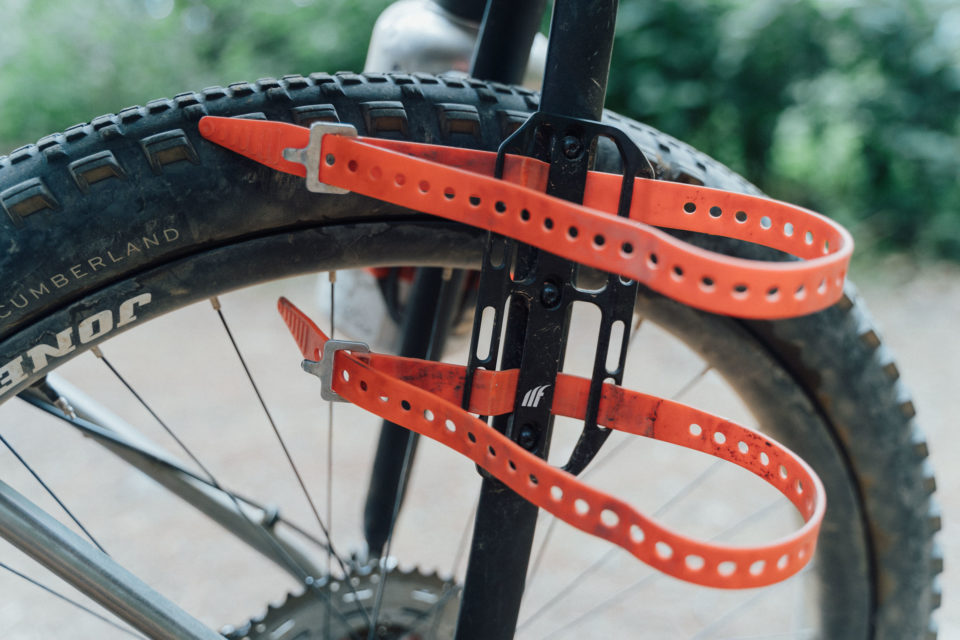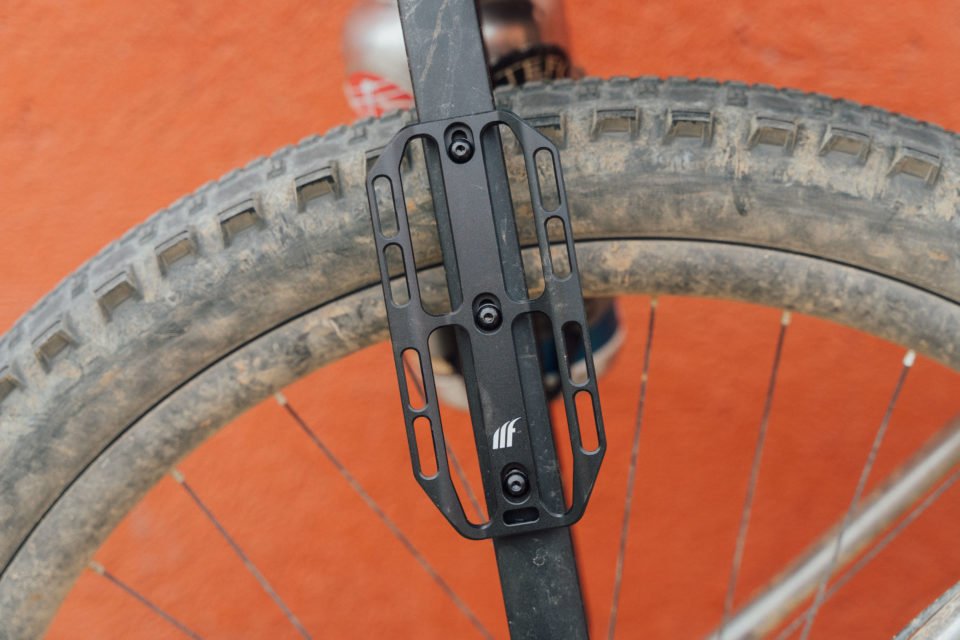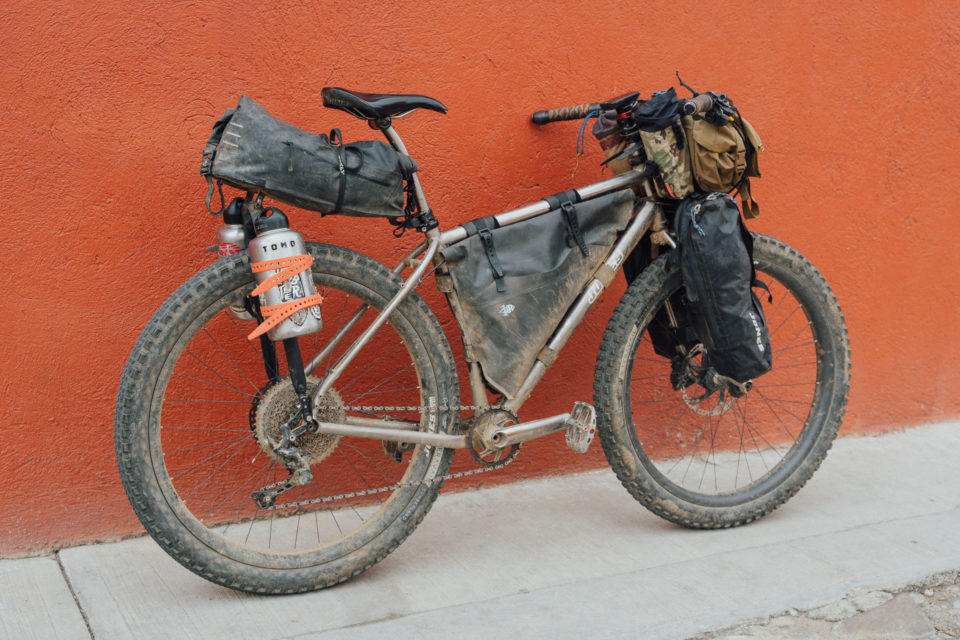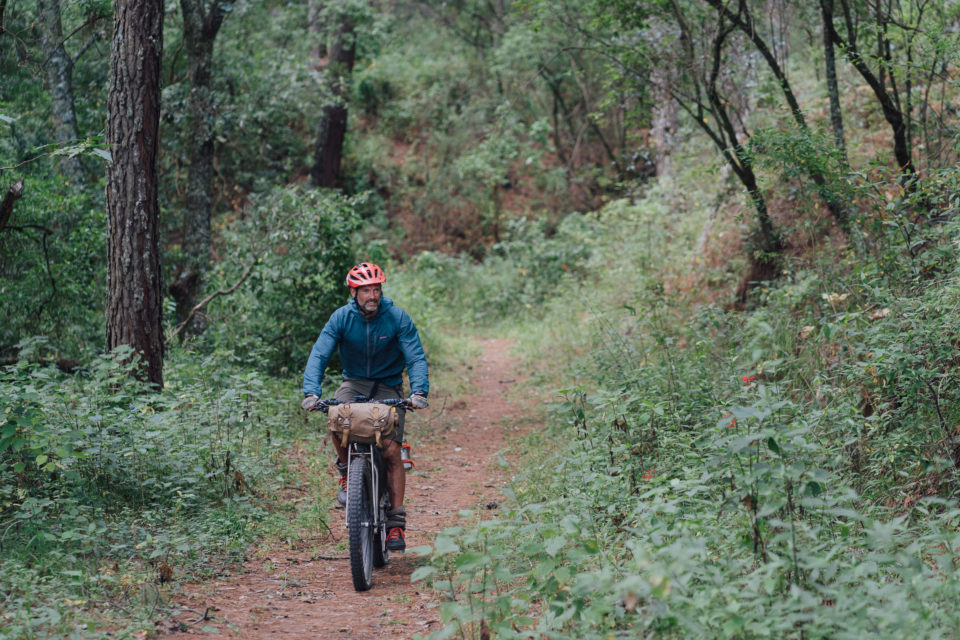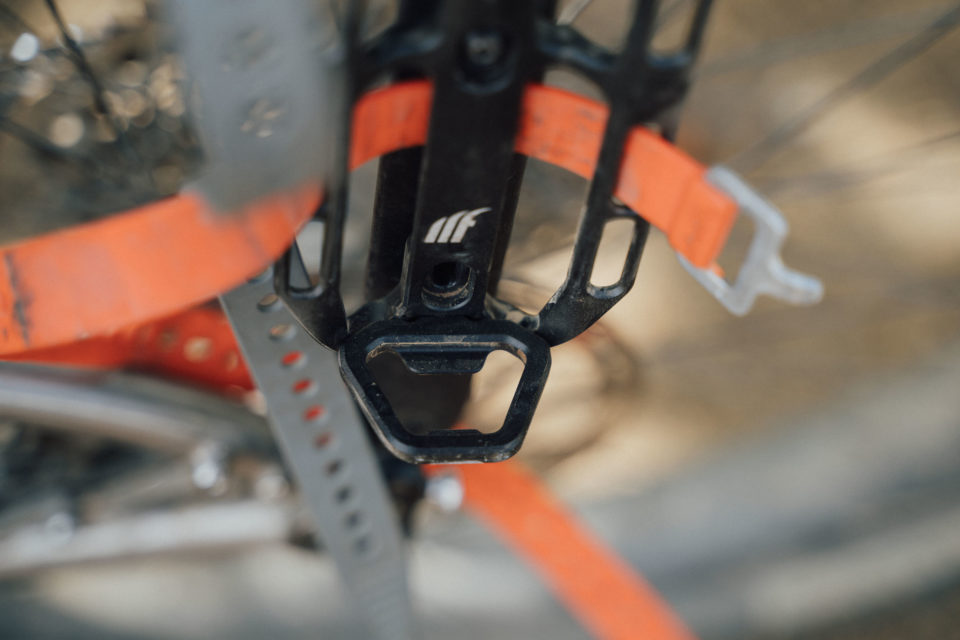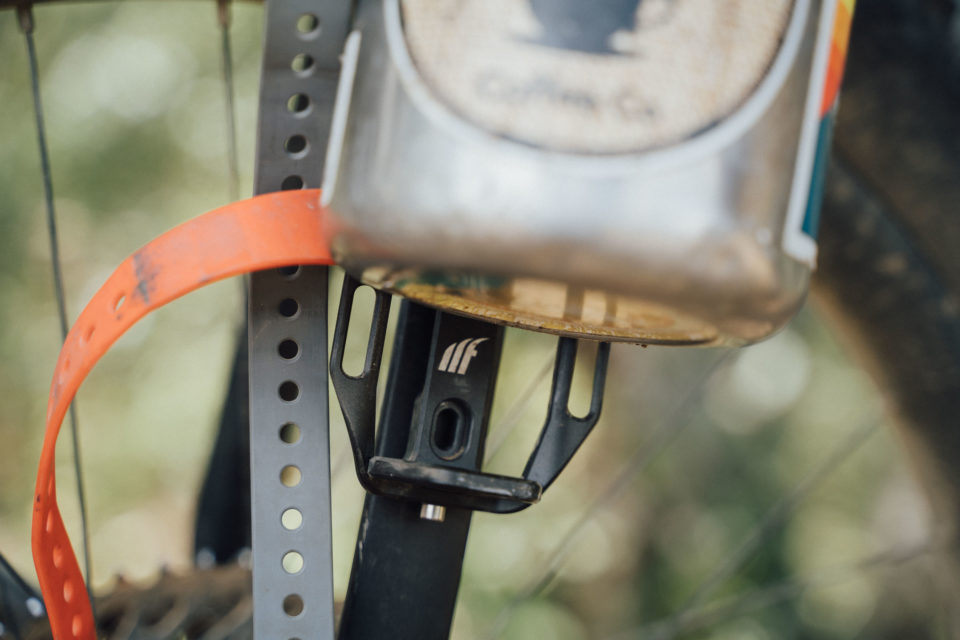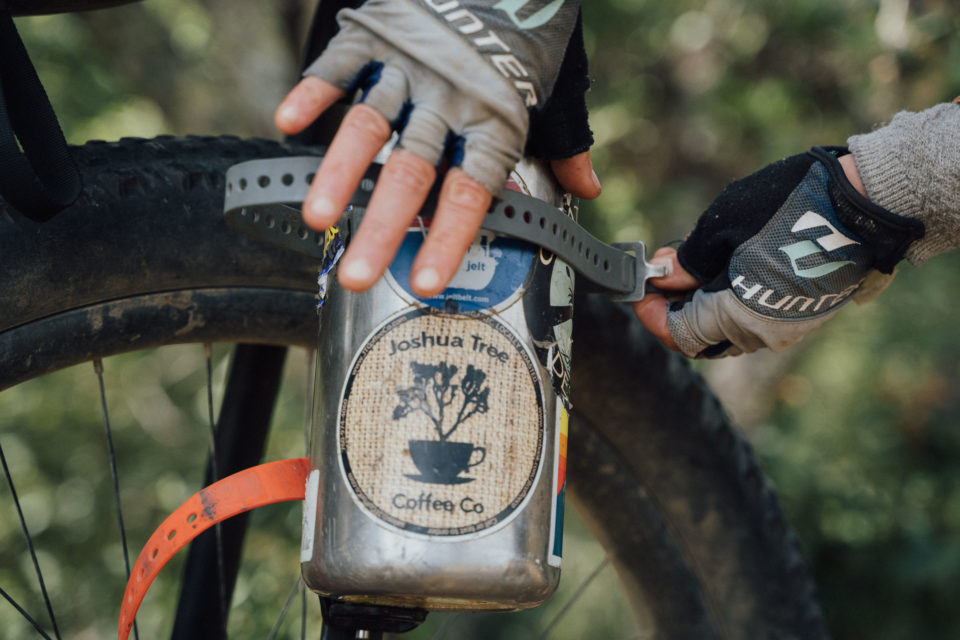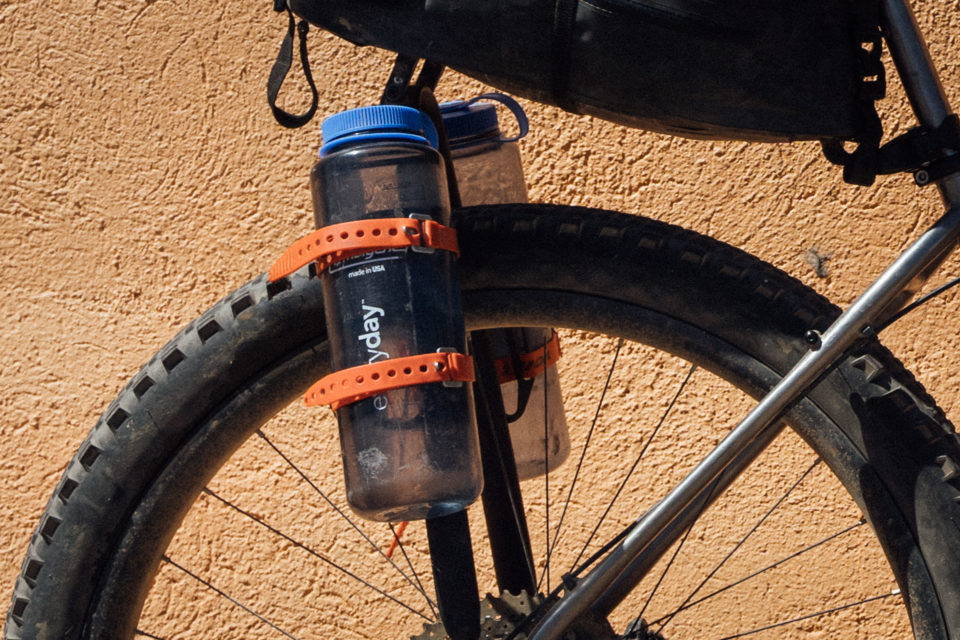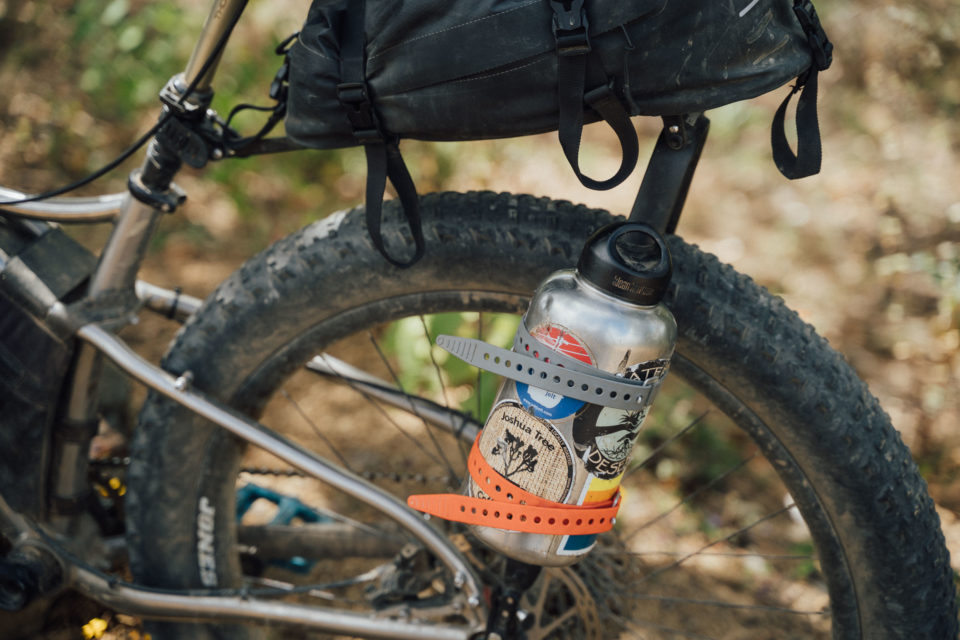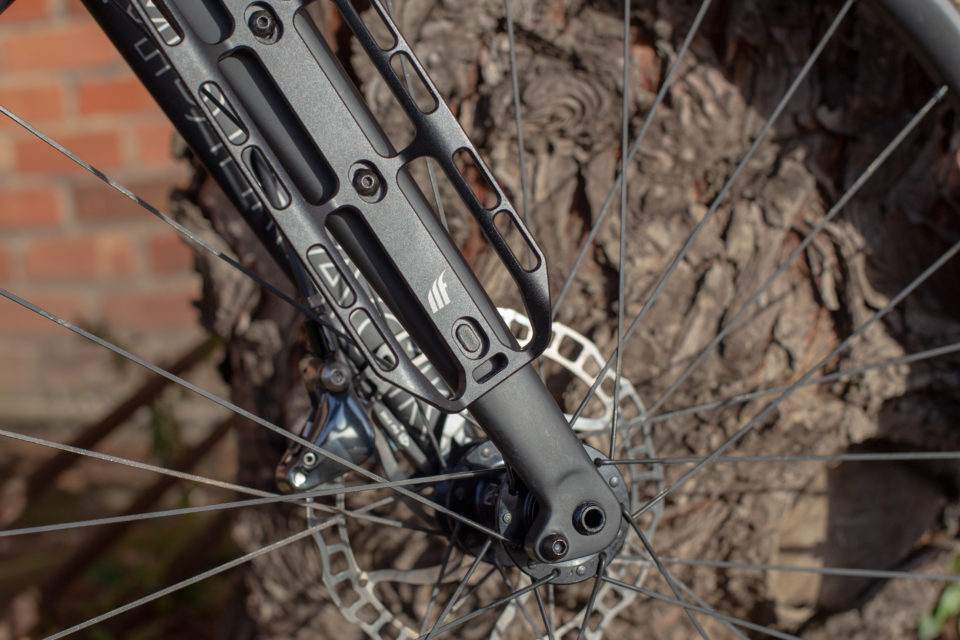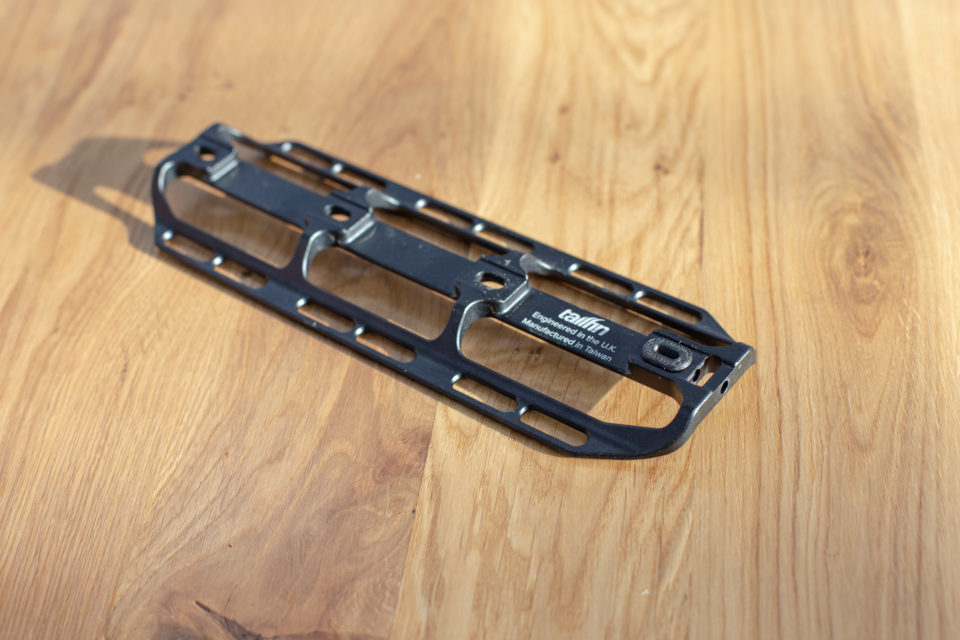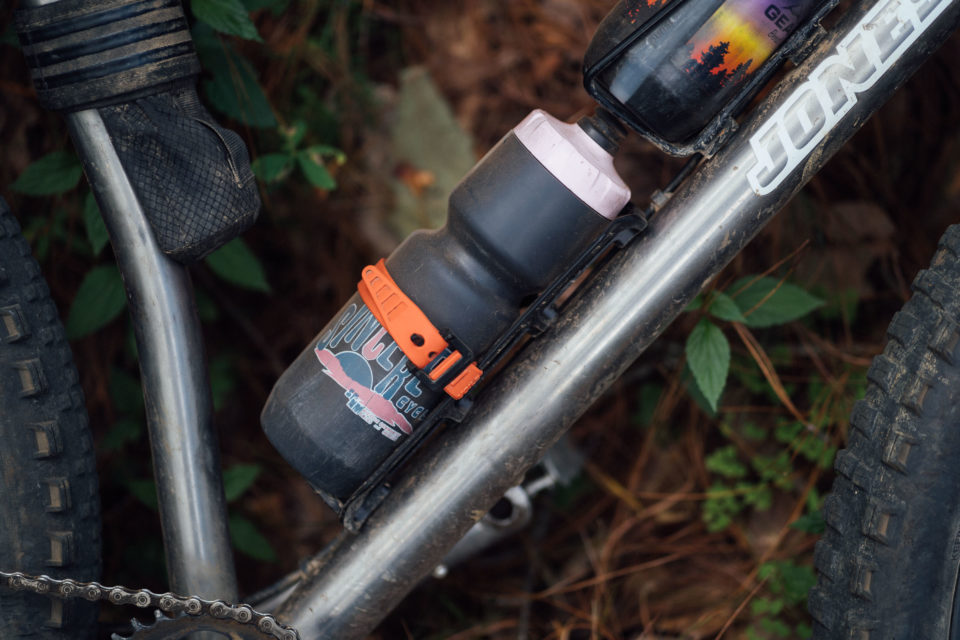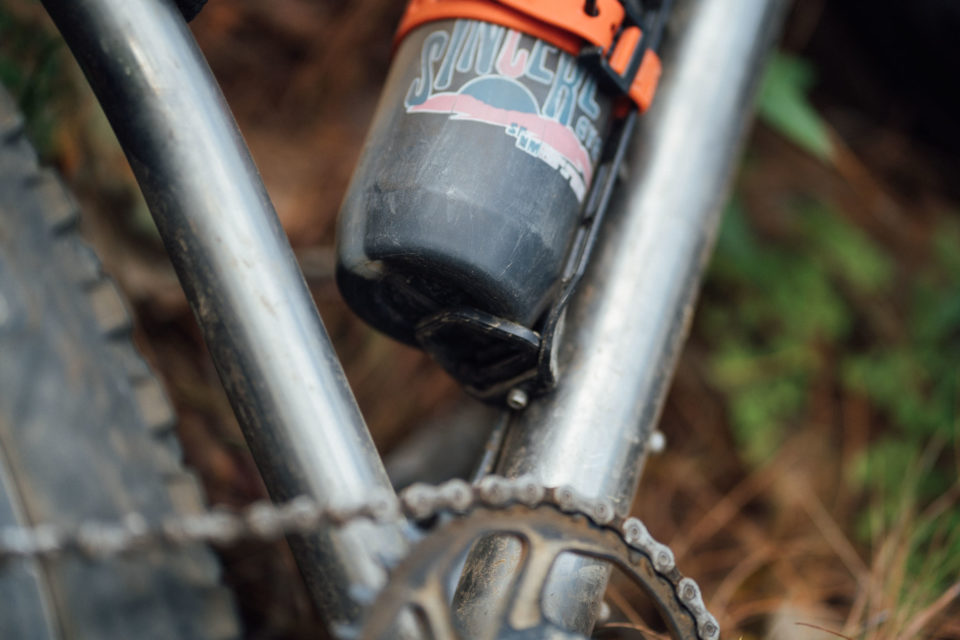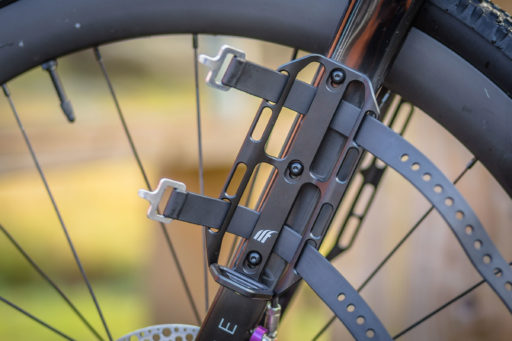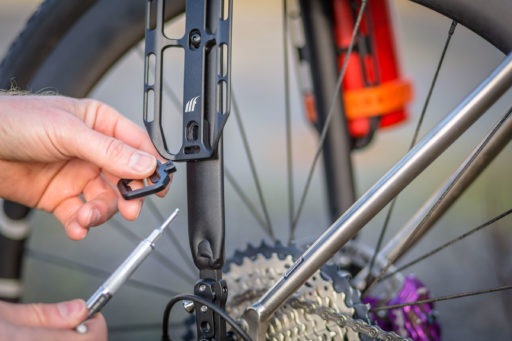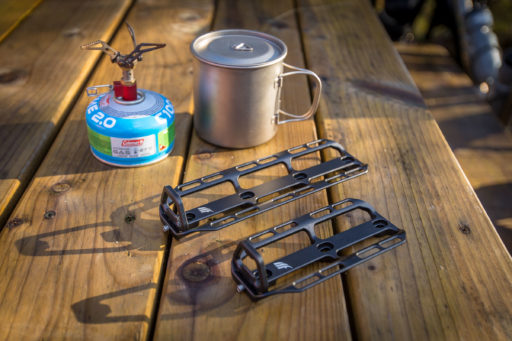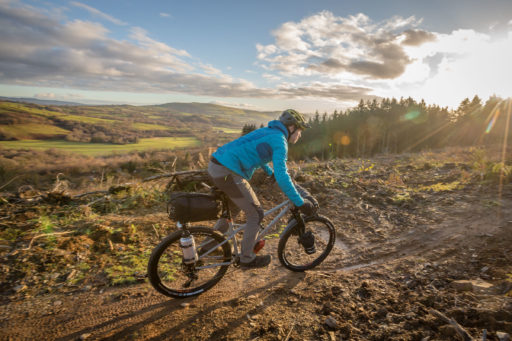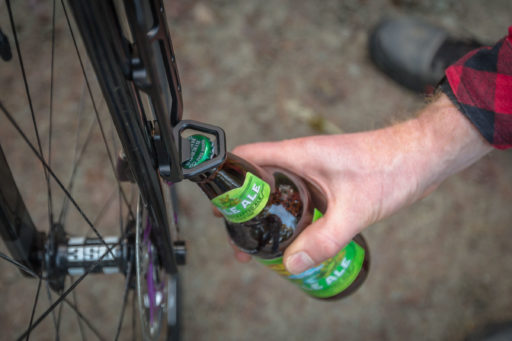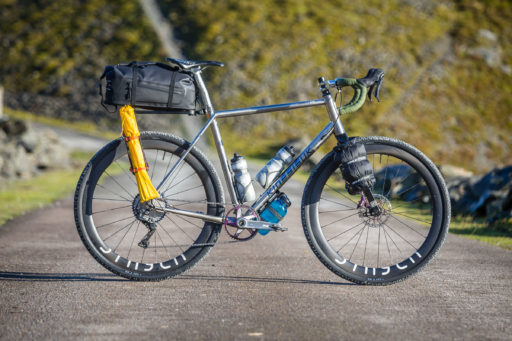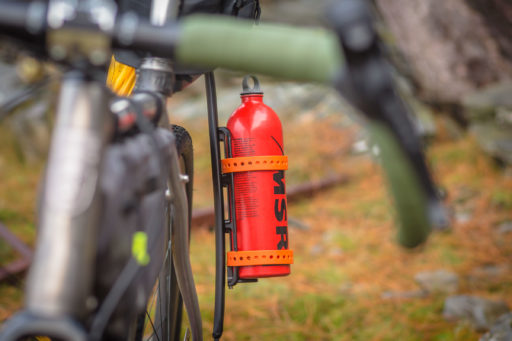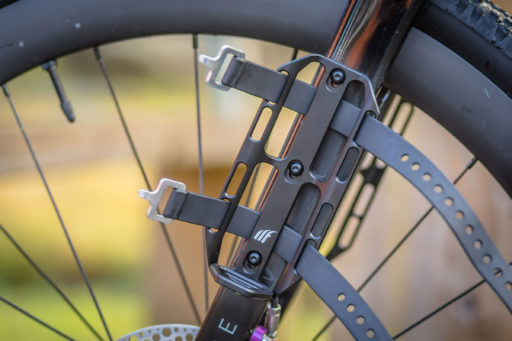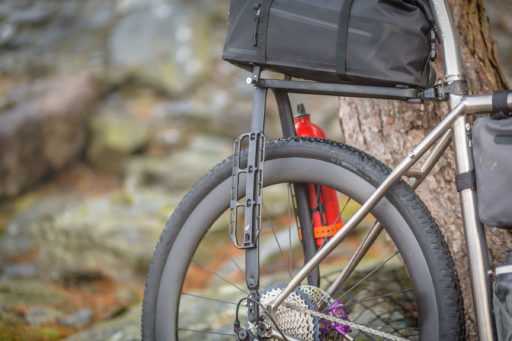Tailfin Cargo Cage Review: Clever Design in Two Sizes
Share This
Announced today, the Tailfin Cargo Cage is a nifty, modular utility cage that’s available in two sizes and is designed for forks, frames, and Tailfin’s own rack system. Read on for Cass’ full review after several months of use on a variety of day rides, dirt tours, and singletrack bikepacking trips.
Last year, I reviewed Tailfin’s UK-designed AeroPack Carbon S. I was so impressed with the company’s take on a bikepacking-seatpack-meets-rear-rack that I’ve been running one ever since. Despite the bag’s generous size, I did gently bemoan the lack of fork eyelets for extra cargo-hauling, so I was especially pleased to see that feature later introduced to the aluminium version of the model I tested.
In fact, I swapped out the lighter, carbon fork I had on my test bag for the more versatile alumin(i)um one when I set off to ride a part of the Baja Divide earlier this year – a route that’s renowned for camel-like water hauling requirements – and put these new eyelets to good use. Which brings me onto the review at hand – Tailfin’s very own cargo cages – samples of which I’ve been using for the last couple of months.
Not content with providing the ability to simply fit a cargo cage, it seems Tailfin’s owner – Nick Broadbent – had also been busy developing ideas for what the perfect one should look like, too. Announced today is the company’s own, straightforwardly named Tailfin Cargo Cage, available in two sizes, both of which are intended to be used in conjunction with Voile straps, the bikepacker’s perennial favourite for lashing all and sundry onto their bikes. The Small Cage features four rows of slots and can be mounted with either two or three bolts, while its taller brother – by some 60mm or so – has 6 rows of slots and can be held in place with anything from two to four bolts. This opens up a gamut of mounting options, be on top of downtubes or below them, and to fork blades, be they double or triple eyeletted – let alone Tailfin’s own rack system, of course.
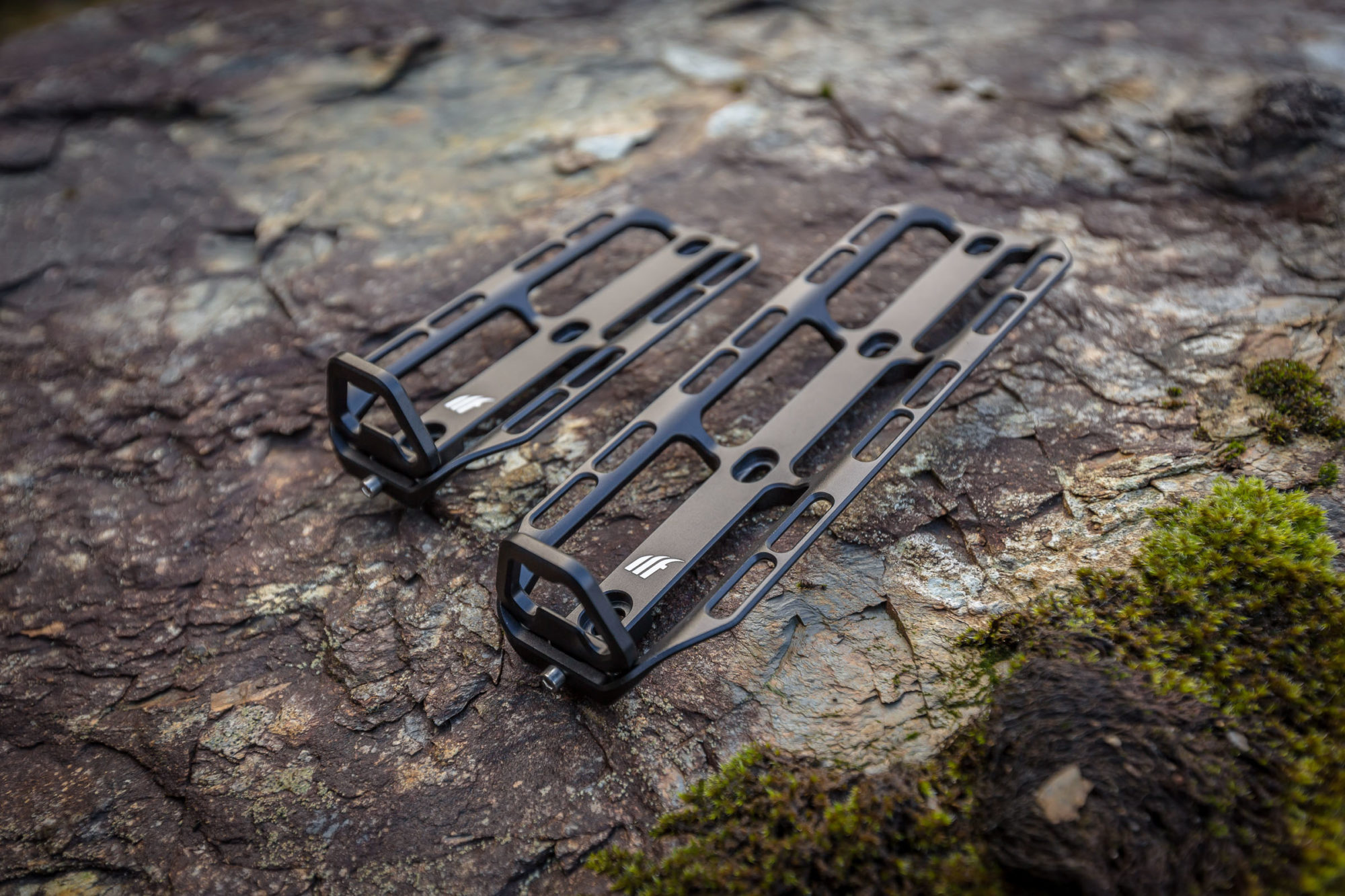
New to this style of utility cage, the two models also come with detachable ‘feet’ – or Load Chips, as they are called. Attaching these mini supports adds both stability and practicality, particularly when heavy items are carried – like a 1.9L Klean Kanteen stainless steel bottle, also a bikepacker’s favourite. Removing them is a quick process that allows the cages to become more svelte in profile (good for day rides on trails, especially when mounted below the downtube), drops a few precious grams of weight, and opens up the possibility of carrying long items like fishing poles or tent poles, using Voile’s cute little Nanostraps. Either way, load capacity is quoted as 5kg per side for road use and 3kg for off-road riding, which is as much as I’d want to carry before making the jump to panniers.
In the image below, you can see all the specs you’ll need to help you work out their potential placement on your fork blades, or within and below your bike’s frame. If you are running the cages on a Tailfin, the position of the Small Cage means you won’t be able to use the Load Chip with big bottles. But if you use the Large Cage, the Chip lines up perfectly.
Whilst my bikepacking trips have been limited this year, I did get the chance to put both these cages through the wringer on a number of short but very intense multi-day rides and day rides – testing them over bumpy terrain and challenging singletrack. For the most part, I ran the Small Cage, without the provided Load Chips, with either two 64oz/1.9L Klean Kanteens or two 48oz/1.4L Nalgene bottles – as you can see from these pictures. The ideal Voile strap length for these bottles is 20″ and 15″ respectively. In use, I found the shape of their cradles cupped these bottles very securely, whilst the sunken slots ensured there was no risk that the attachment bolts pressed up against them, either. Indeed, even the smaller of the models seemed so unexpectedly secure with a Kleen Kanteen that I figured I’d leave the cage on my AeroPack all the time, and just bring along the bottles as and when they might be required for extra water carrying duties.
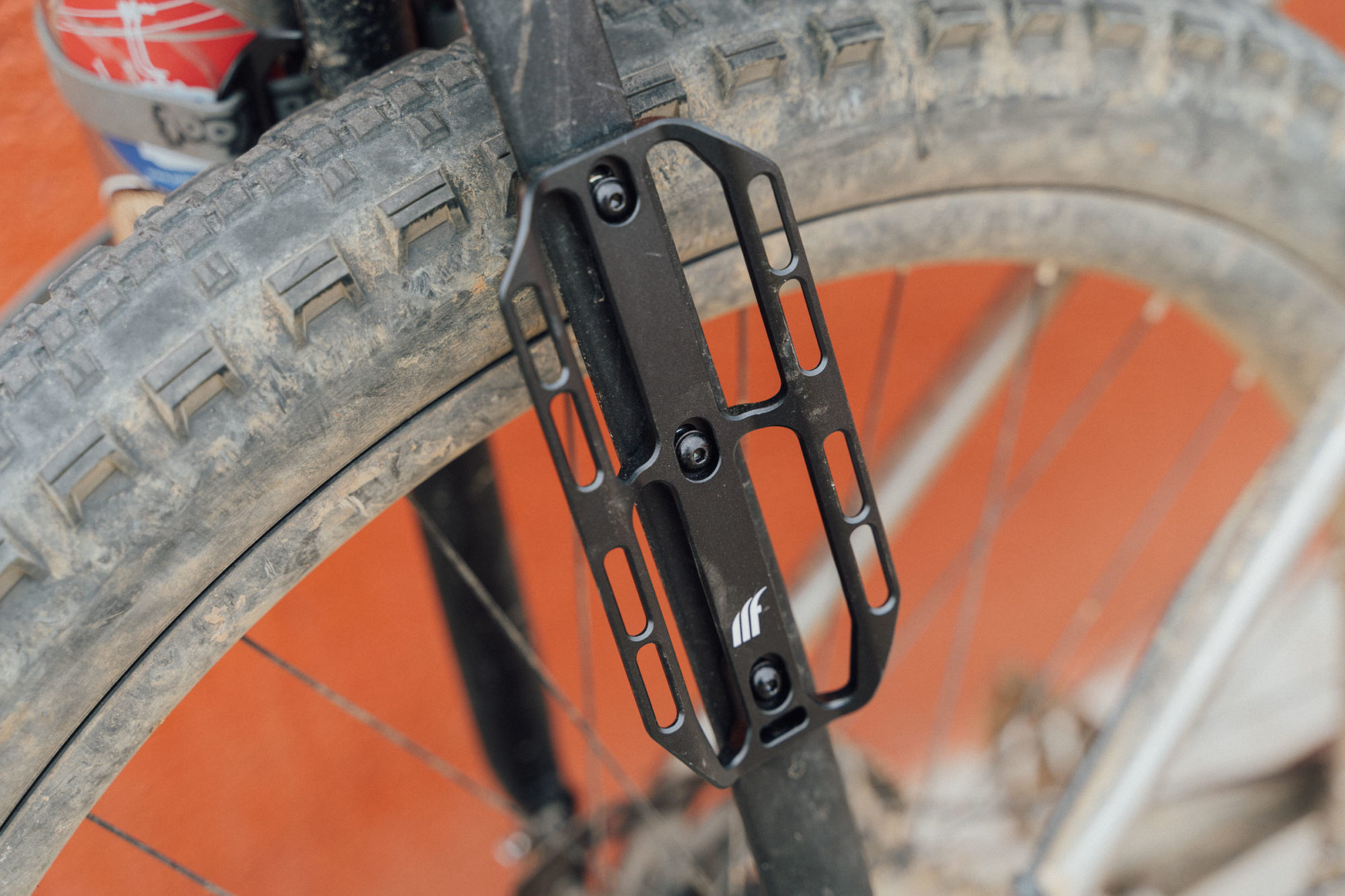
In practice, however, it was a combination that proved such a pleasure to use that it became my main way of carrying water, freeing up space elsewhere for gear. Prior to this, I’d tended to keep a 3L water bladder in my framebag for better weight placement when riding trails, topping it up at the beginning of the day, or before hitting my campsite. However, it’s not an especially user-friendly system and as a result, I found myself simply defaulting to the Tailfin cage and bottle option. A part of this is due to their well-designed strap retention system. When cargo is removed, the straps are held firmly in place without sliding around at all – there’s neither a risk that they’ll slip out and get lost at any point, nor any faff when lining them up for loading in cargo once more. When you do decide they’re not needed, chamfered slots makes feeding them out a quick and frustration-less affair. This kind of attention to detail can really make or break the usability of a product and it’s a big part of why I favour them over non-captive designs, like King Cage’s 55g titanium Manything Cage.
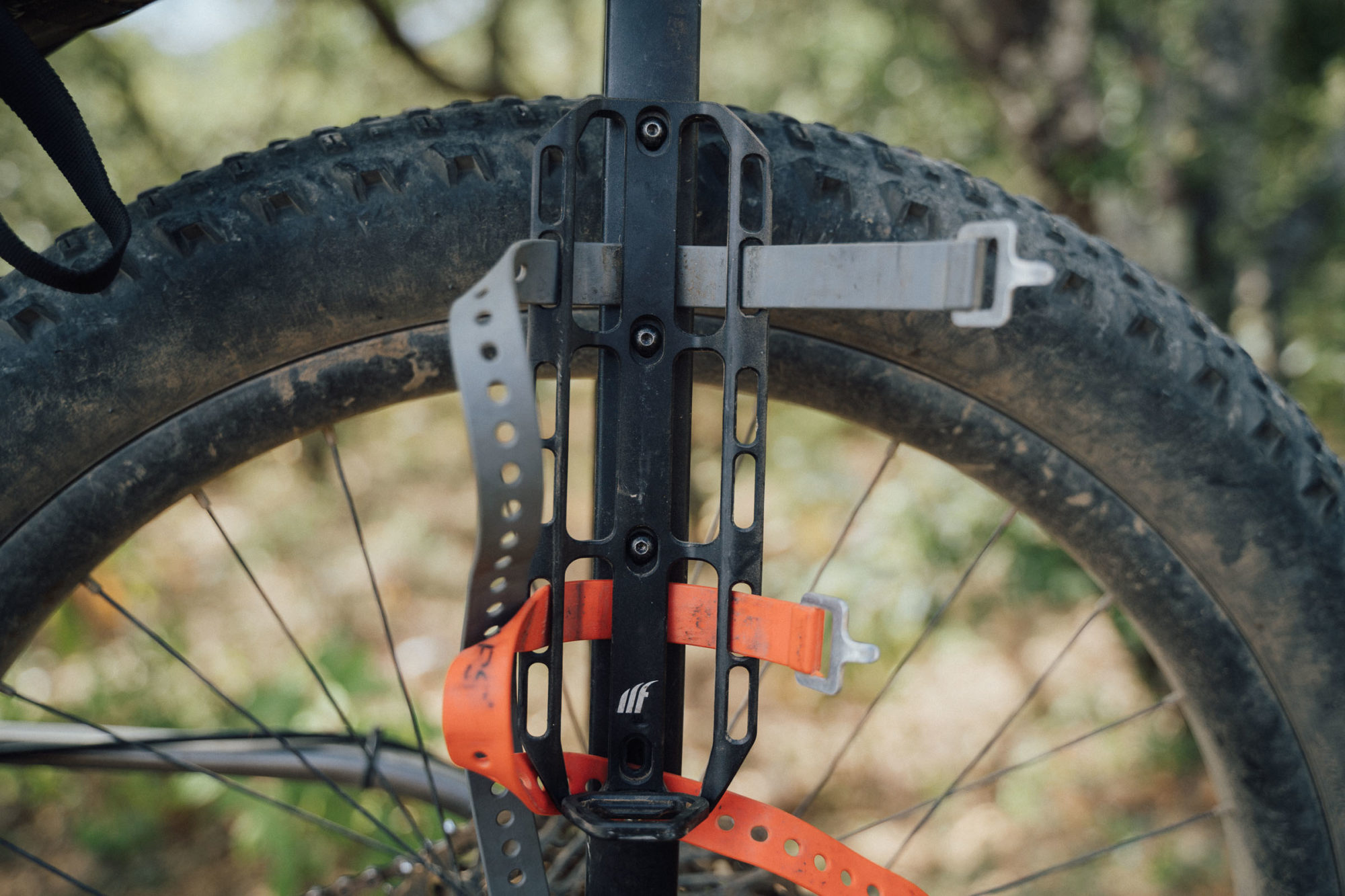
I did try the large version too and definitely noticed that the Load Chip makes loading heavy bottles an even easier process, in that you don’t have to press up against it with your leg to hold it in place. It wasn’t a deal-breaker for me though, and I ultimately preferred the streamlined looks of the more minimal, foot-free version. Compared to my ultralight, foldable water bladder, perhaps it irked me that I was dedicating even more weight to simply carrying 1.9kg of water – the cage, straps, and the 1.9L Klean Kanteen itself (375g alone!). But really, the weight difference between the two Tailfin cages is so minimal that swapping over to 1.4L Nalgene bottles (209g apiece) is a far better way to retrieve a portion of this and maintain robustness (I’m no fan of plastic drinks bottles as they always seem to crack eventually).

Pictured in action, Emma is perhaps more sensible than I am because she was less bothered by lean looks, and simply preferred the Large Cage and the way its Load Chip provides a perfect platform for supporting bottles, making packing that much easier. As I say, for those who you do want to go that route, you’ll need to go with the Large version on Tailfin’s own rack pack, in order for the bottle to line up below the bag.
And as for the Load Chips themselves… if you think they’re a gimmick waiting to fail, I found them quite the opposite, somewhat to my surprise. They slot in extremely neatly to the cage and are held securely in place with a stainless steel bolt, which means there are no welding areas to potentially fail. And did I mention they double up as bottle openers, too?

In fact, the whole cage feels very robust. Lay your steed down on the ground and the cage easily shrugs off the weight of a bike, unlike flimsy, tubular cages I’ve tried. Similarly, they remain extremely secure when you’re cranking hard on the Voile straps, too. There’s no plastic to crack, either, which happens to some cages. I didn’t get a chance to try the Tailfin Cargo Cage with a bag of any kind, as I don’t currently have access to one, or a bike with eyelets on the fork. But I have no reason to think that despite the cage’s streamlined shape and compact load chip, it won’t be just as firm in its embrace, whatever its tasked with carrying or wherever it’s positioned.
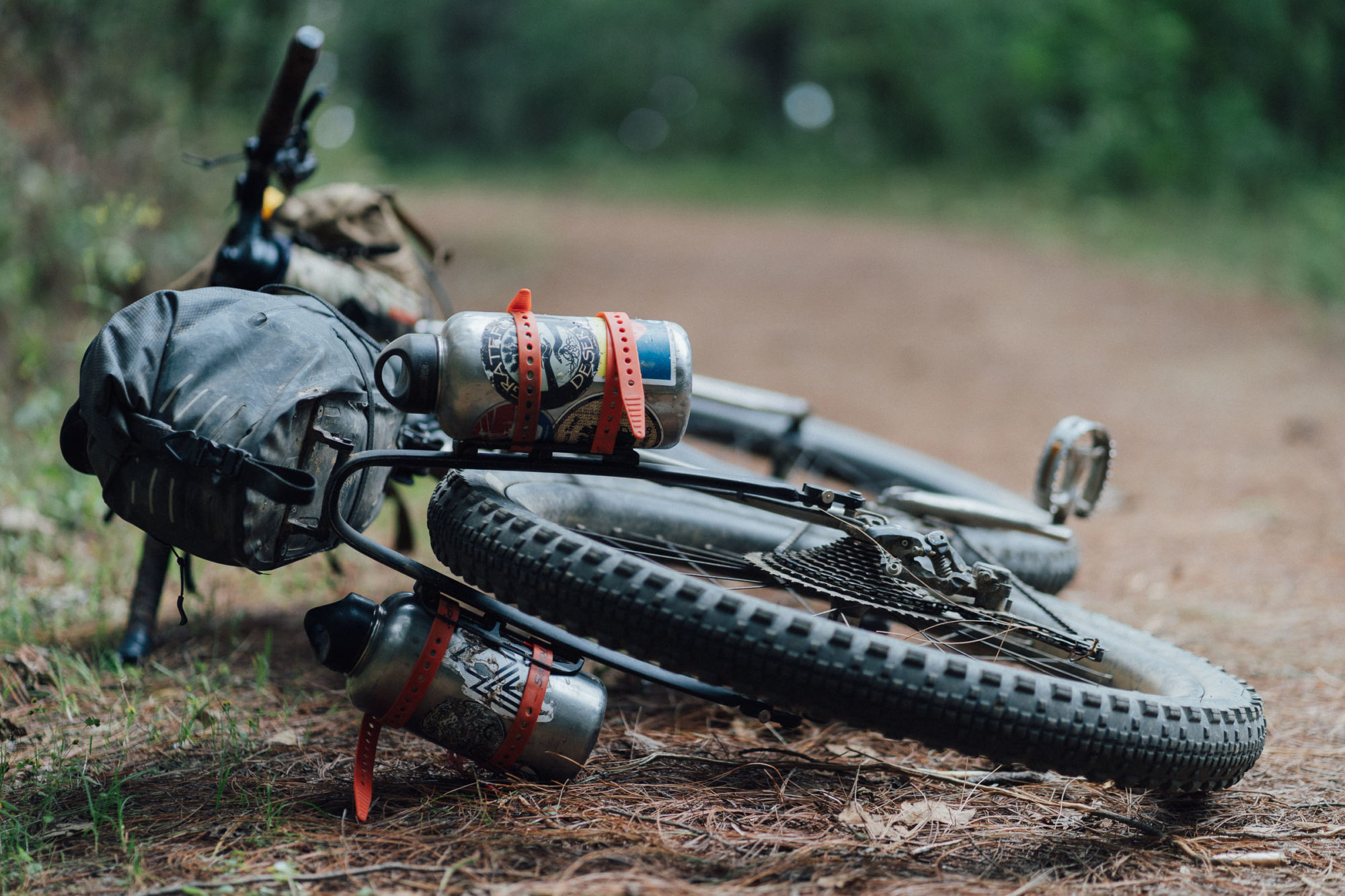
A couple of small observations, though. The cages come with high quality, button-headed stainkess steel bolts, with an ED black coat to match in. But unless you have a long 3mm hex key handy (3mm hex keys on multi-tools tend to be stubby), it can be tricky to attach the rack with the Load Chip already fitted, as it’s a tight angle to the bottom bolt. Of course, this easily rectified by swapping one of the supplied bolts with a 4mm alternative (which tend to be longer on multitools and the bolts are less likely to round out too) but it’s a change you’ll have to make.
Additionally, a smaller diameter stainless steel hex key bolt holds the Load Chip in place. But as it’s inserted from the underside of the cage, I wonder if it might be prone to working its way loose and getting lost? I put this concern to Nick Broadbent and his reply was typical thoughtful – “That’s a fair point. Good pro-tip to add some threadlocker. In the next batch I’ll perhaps get it coated with a nylon patch. The pre-applied stuff is often too strong.” In case it does go astray, it’s an M4x10 with a 3mm head.
I also noticed the extrusion on my Large cage was slightly ‘bowed’ in shape. Whilst this wasn’t an issue with Tailfin’s own AeroPack, it meant one end rubbed lightly on the frame of my bike when it was mounted to the downtube using three eyelets – unless I placed a spacer on the underside of the uppermost bolt. Whilst it proved an effective workaround, it was also a fiddly one. Again, Nick responded quickly, sending me a photo of a 3D printed rubber insert that he quickly rustled up, providing a bumper for the last of the 4 eyelets. This prevents the cage from potentially rubbing the frame and – in my opinion – makes it look cleaner too. Rubber ‘bungs’ have since been ordered from Taiwan – two will be supplied with each Large Cage, slotting into the underside of the cage to prevent any rub. Tailfin will also be including one with each Small Cage, so it looks neater when you run it with just two bolts. It’s exactly this kind of detail – and a willingness to take on feedback in a quest to make the best product that they can – that continues to impress me about Tailfin.
I have yet to see them, but this is what they will look like:
I also used the Large Cage as a means to carry an extra water bottle on day rides, when I wasn’t running my framebag. Clearly it’s not as practical as a dedicated water bottle cage, but given how well the straps hold are held in place when the bottle is removed, it still works perfectly well for an additional bottle – with the added bonus that it’s more versatile too. I didn’t get a chance to try either below my downtube – I tend to keep that area clear so it’s easier to loft my bike – but Tailfin reckons their 72mm width should mean you won’t run into any issues, regardless of your drivetrain’s Q-factor (the distance between the cranks).
For comparative purposes, Tailfin’s Cargo Cages are similar in price and weight to the US-made King Cage’s Manything Cage, another favourite. But note that Tailfin doesn’t include Voile straps, which you’ll have to source independently. Widefoot’s colourful CargoMount costs $47-57, depending on whether Voile straps are included or not. Salsa’s original Anything Cage goes for $30, Blackburn’s Outpost Cargo Cage costs $25, whilst drj0n bagworks ultraminimal, 25g Strap Deck is £19. Check out our comprehensive gear index here and see just how many options there are on the market and which is likely to suit your needs best.
Finally, here is Tailfin’s own gallery and promotional video, so you can see them mounted in all manner of places on a hardtail. If you’re wondering what the bike is, it’s the super affordable Ribble HT725. And yeah, I’d never heard of it either, and I think it looks great too!
Lastly, here are some more Tailfin product shots, so you can how they look on a gravel bike – in this case, a Kinesis on location in Scotland, with tent poles, Voile’s Nanostraps, and a fuel bottle.
- Construction7075-T6 Aluminium
- Length 157mm (S), 221mm (L)
- Width 72mm
- Depth16mm
- Weight (Cradle only/with Load Chip)56.6g/67.8g (S), 78.9g/90.2g (L)
- Place of manufacture Taiwan
- Price Small £39/€45/$55 Large £45/€50/$60
- Manufacturer’s Details Tailfin
Wrap Up
When Tailfin told me about their plans to develop this product, I did wonder whether the world really needed yet another cargo cage (let alone two). I might even have told them so. But now that I’ve actually used them, I’m very happy to eat my words. These cages show a remarkable level of thought and design – and I love the resulting balance that they strike between stability, low weight, modularity, strap retention, and a svelte profile.
In terms of the company’s own product range, they add considerably to the versatility of the original AeroPack and are very well suited to anyone planning an extended trip or a desert journey, and riders making up for a shortfall in framebag space (or even, those who aren’t running a framebag at all). As such, the aluminium version of the AeroPack now feels like a complete ‘system’, with lots of space for gear on top and the capacity to carry a solid 4L of water of quick-to-access water too.
As for everyone else, they offer a number of improvements over many cargo cages that I’ve tried. Personally, I’m completely content with the small version – despite its shorter length, it can amply handle as much weight as I’m ever likely to need and I appreciate its discreet looks when not in use. Others preferred the ease of loading afforded by the Large Cage and its nifty stabilising foot. Ultimately, which model works best for you will be down to personal taste and what you intend to carry.
In terms of price, the Tailfin Cargo Cage comes in at the highest end of the cargo cage spectrum, once you factor in the additional straps that need to be sourced independently. But from my experience so far, I believe it’s money well spent, as these cages are very versatile, well made, and from what I can tell, very unlikely to fail.
Please keep the conversation civil, constructive, and inclusive, or your comment will be removed.






